Wildlife North America . com North American Animals - mamals, birds, reptiles, insects |
|
| |
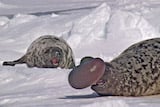 |
Hooded Seal (Cystophora cristata) The Hooded Seal inhabits ice packs and cold northern Atlantic waters. It has a grey body with dark spotted pattern, and a black head. Male hooded seals also have a black, crescent shaped, inflatable nasal sac that... Read more > |
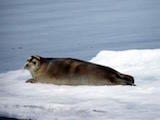 |
Bearded Seal (Erignathus barbatus) The Bearded Seal lives in the arctic near pack ice. It is gray or brown, with darker back and paler underside. They have a large, wide muzzle with long white whiskers, and small close set eyes. The flippers have digits... Read more > |
|
| |
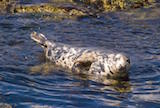 |
Gray Seal (Halichoerus grypus) The male Gray Seal is dark grey with lighter silver grey spots. The male has a long-arched roman nose. The female is silver-grey with small scattered dark spots. The underside is lighter in both male and female. Pups... Read more > |
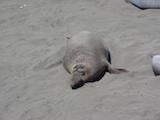 |
Northern Elephant Seal (Mirounga angustirostris) Northern Elephant Seals are usually brown with lighter underside. The males are dark brown and females are lighter brown or tan. Pups have black hair until their first molt when they grow a lighter coat. The male has a... Read more > |
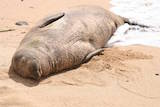 |
Hawaiian Monk Seal (Monachus schauinslandi) The Hawaiian Monk Seal is found only around the Hawaiian Islands. It is brown or grayish brown above and paler underneath. The coat looks much darker in when wet. The Monk Seal has a long neck and broad rounded head. It... Read more > |
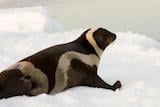 |
Ribbon Seal (Phoca fasciata) The Ribbon Seal lives in the arctic parts of the Pacific Ocean, including pack ice off the coast of Alaska. It has dark fur with contrasting white or yellowish bands on the neck, flippers, and body. Males are darker... Read more > |
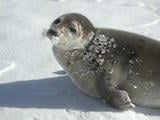 |
Harp Seal (Phoca groenlandica) Harp Seals are from the Arctic Atlantic. The male Harp Seal is silver grey with black head, and a black harp-shaped (or horseshoe shape) on the back. Females are paler with less distinct markings. They shed their coats... Read more > |
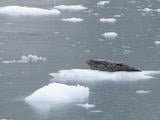 |
Ringed Seal (Phoca hispida) The Ringed Seal is the smallest North American Seal and the most common arctic seal. It is pale grey with dark spots above and a silvery gray underside. The spots on the back are surrounded with pale rings. Ringed seals... Read more > |
 |
Spotted Seal (Phoca largha) Spotted Seals have dark irregular spots on a lighter background. Newborn pups are white haired. Spotted Seals form large groups of up to several thousand when they come onto the ice for breeding and molting. Read more > |
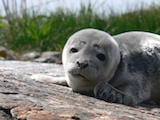 |
Harbor Seal (Phoca vitulina) The Harbor Seal is the same species as the Common Seal from northern Europe including Britian and Ireland. It varies in color from brownish black to tan or grey with lighter belly. The body has a pattern of fine darker... Read more > |
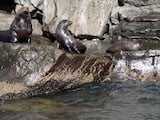 |
Guadalupe Fur Seal (Arctocephalus townsendi) The Guadalupe Fur Seal has a brownish gray back with silvery and yellowish-gray mane on the nape of the neck. They have pointed snout with ruse color on each side. The eared seals (sea lions and fur seals) have small... Read more > |
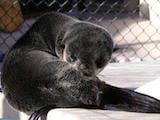 |
Northern Fur Seal (Callorhinus ursinus) The Male Northern Fur Seal is reddish or black in color. Adult females are usually gray or brown. The pups have black fur. Pups usually have lighter markings on the nose and underside. Adults have a mane, more... Read more > |
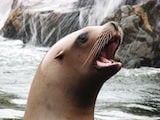 |
Steller Sea Lion (Eumetopias jubatus) The Steller Sea Lion is the largest of the eared seals. Adults have a buff colored coat of short coarse hair. Males have a thick muscular necks and a mane of coarse long hair. Sea lions have longer flippers than the... Read more > |
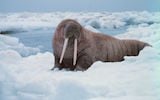 |
Walrus (Odobenus rosmarus) Both males and females have two long tusks about 50cm long. The males have longer tusks. They have a beard of stiff bristles that grow to 30cm long. These are replaced every year. Their bodies are covered with short... Read more > |
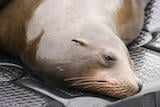 |
California Sea Lion (Zalophus californianus) Adult male California Sea Lions are mostly dark brown with lighter belly and side coloring. Adult females are dark brown or tan. Pups have a blackish brown coat, which is molted by the first month and replaced with a... Read more > |
|
Home | Mammals | Reptiles | Birds | Insects | Privacy Policy | Disclaimer | Contact Us |